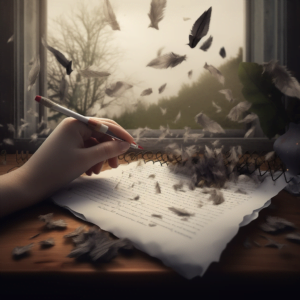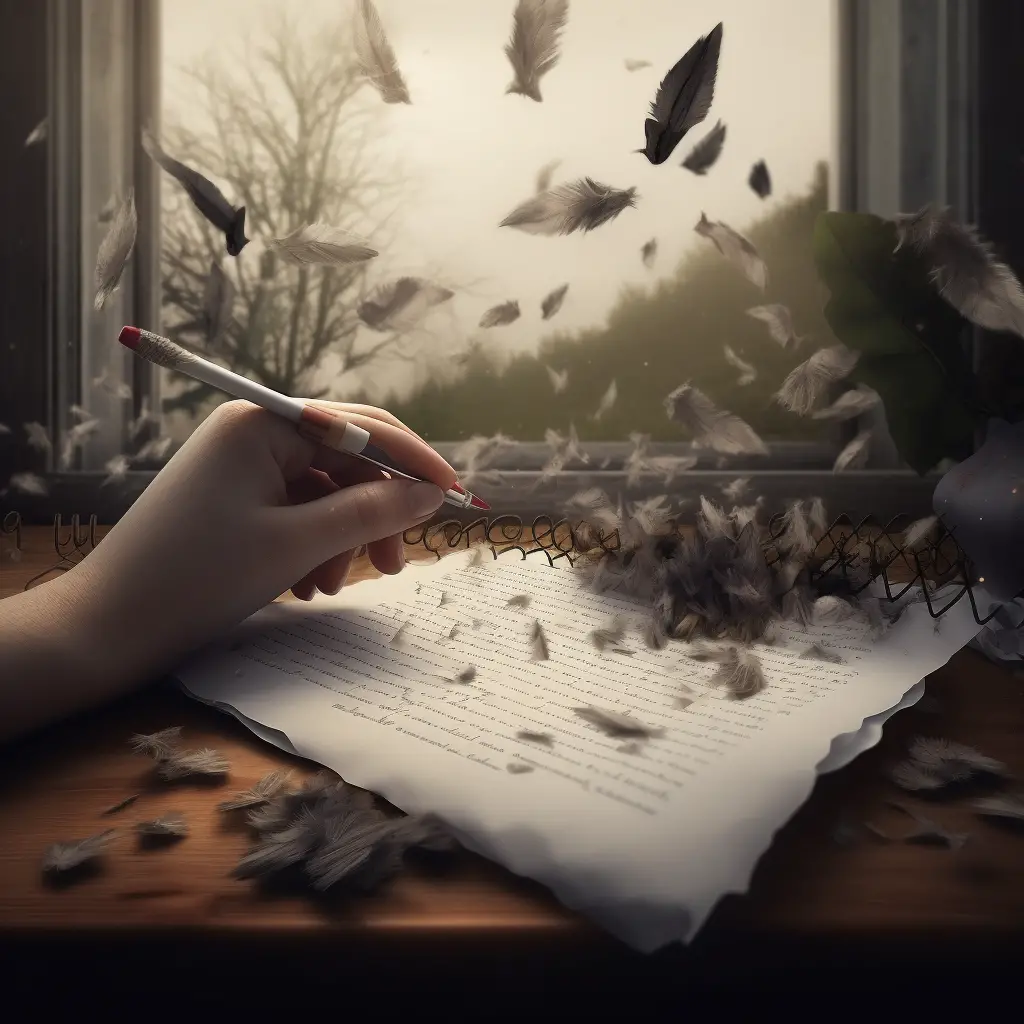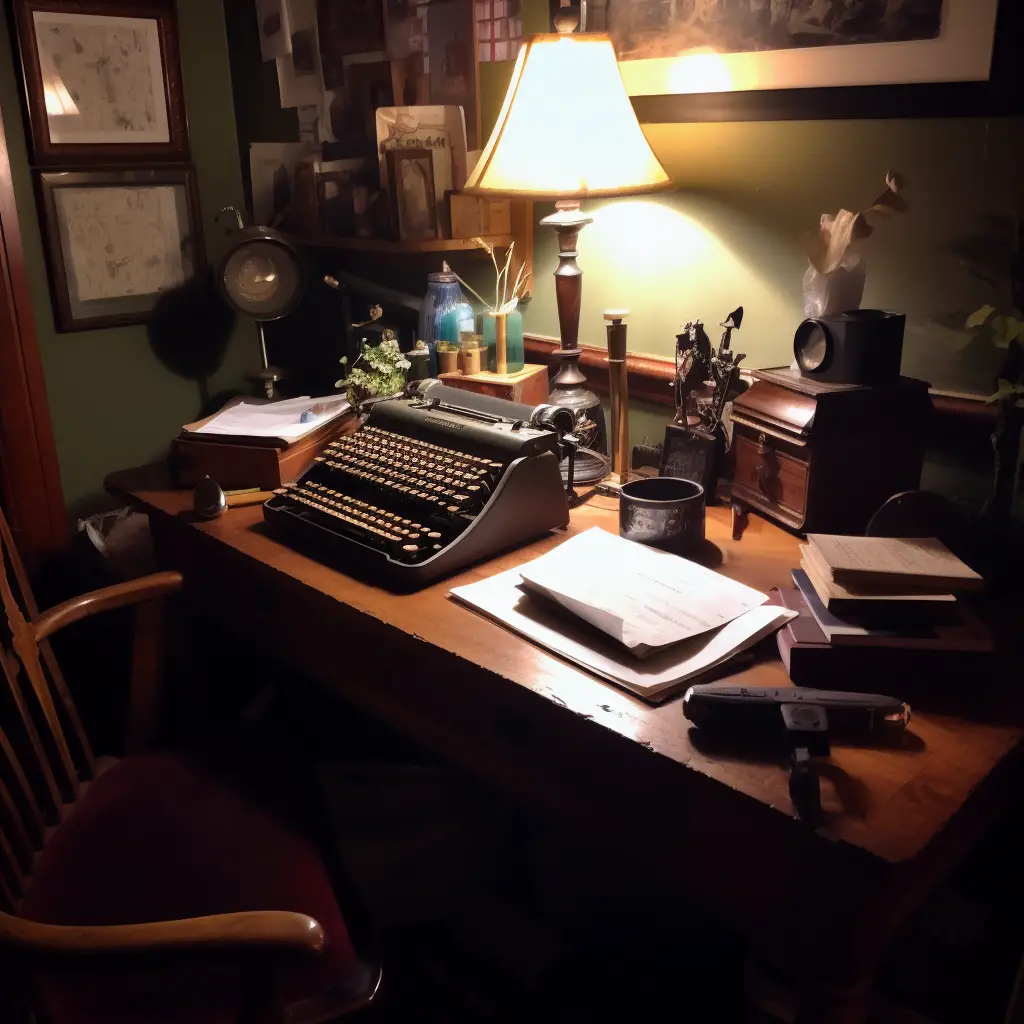
Enjambment is a fancy word for when a sentence in a poem doesn‘t end at the end of a line, but instead carries on to the next one. It‘s like a poetic version of talking too much, but way cooler. A simple famous example is Robert Frost‘s “Stopping By Woods on a Snowy Evening”, which starts with the line “Whose woods these are I think I know”, and then carries on to the next line.
Enjambment Unwrapped: A Stroll Through Never-Ending Lines
Enjambment is like a roller coaster ride through a poem – it keeps the momentum going and adds excitement to the journey. By letting a sentence flow from one line to the next without a pause, enjambment creates a sense of fluidity and movement that can make a poem feel more dynamic and engaging.
The Rhythm of Enjambment: Dance to the Beat of the Poem
Just like a catchy song that makes people tap their feet, enjambment helps to establish a rhythm in poetry. By breaking up the natural pauses and sentence structure, enjambment encourages readers to experience the poem in a more fluid and continuous way.
Enjambment at Work: Building Bridges Between Lines
Enjambment acts like a bridge, connecting lines of poetry and encouraging readers to forge ahead without stopping. This can help to create a sense of anticipation and suspense, as readers are eager to find out what happens next.
By disrupting the natural flow of a poem, enjambment can help to evoke strong emotions and create a sense of energy. This makes it a valuable tool for poets looking to add an extra layer of depth and intensity to their work.
Crafting Enjambment: A Guide for Poetic Pioneers
Ready to try enjambment in your own writing? Here’s a step-by-step guide to help you master this powerful poetic technique:
- Start with a poem: Begin by writing a poem with a clear message or theme. This will make it easier to incorporate enjambment in a meaningful way.
- Identify natural pauses: Look for places in your poem where a natural pause or break might occur, such as at the end of a sentence or after a comma.
- Break the rules: Instead of letting the lines end at these natural breaks, use enjambment to carry the sentence over to the next line.
- Experiment and refine: Play around with enjambment to find the perfect balance between flow and disruption. Remember, the goal is to add interest and energy to your poem without making it too difficult to read.
Examples: Enjambment in Action
Take a look at these captivating examples of enjambment in famous poems:
- Robert Frost’s “Stopping By Woods on a Snowy Evening”: As mentioned earlier, Frost uses enjambment to create a sense of fluidity and movement throughout the poem.“Whose woods these are I think I know. His house is in the village though; He will not see me stopping here To watch his woods fill up with snow.“
- E. E. Cummings’ “i carry your heart with me”: In this poem, Cummings employs enjambment to emphasize the connection between the speaker and their beloved.“i carry your heart with me(i carry it in my heart)i am never without it(anywhere i go you go,my dear;and whatever is done by only me is your doing, my darling)“
- Emily Dickinson’s “Because I could not stop for Death”: Dickinson uses enjambment to create a sense of inevitability and continuity, reflecting the poem’s theme of life’s journey toward death.“Because I could not stop for Death – He kindly stopped for me – The Carriage held but just Ourselves – And Immortality.“
By embracing the power of enjambment, writers can breathe new life into their poetry and create a more engaging reading experience. So why not give enjambment a try and see where it takes you on your poetic journey? With a little practice and experimentation, you might just discover that enjambment is the perfect way to add a touch of magic and excitement to your writing. Happy versifying!
If you’re thirsty for more writing knowledge, head over here to learn all 74 literary devices.





